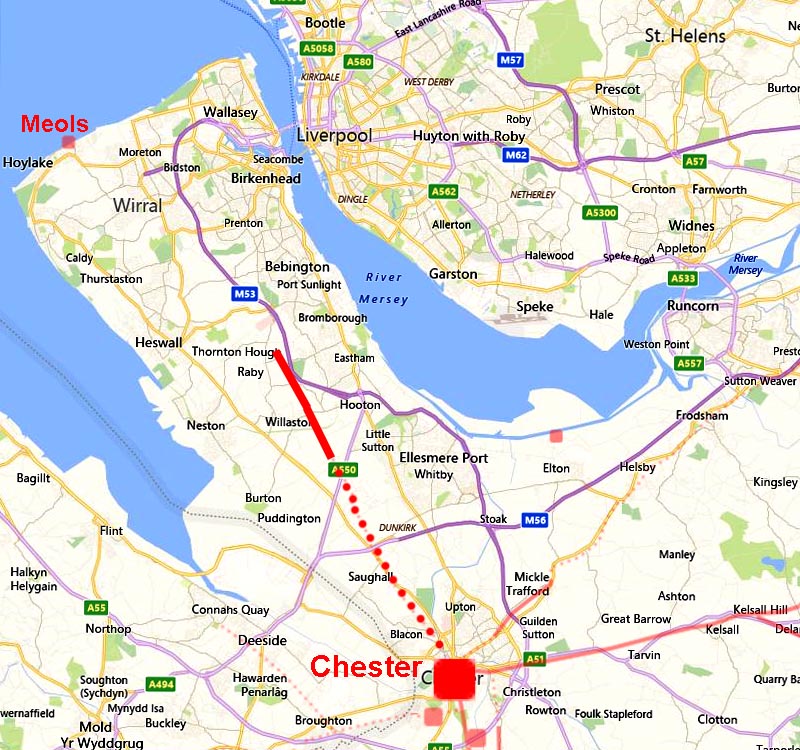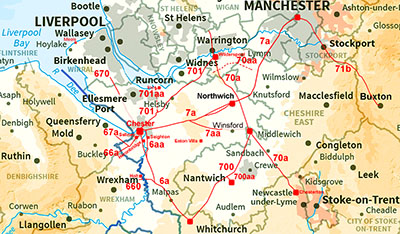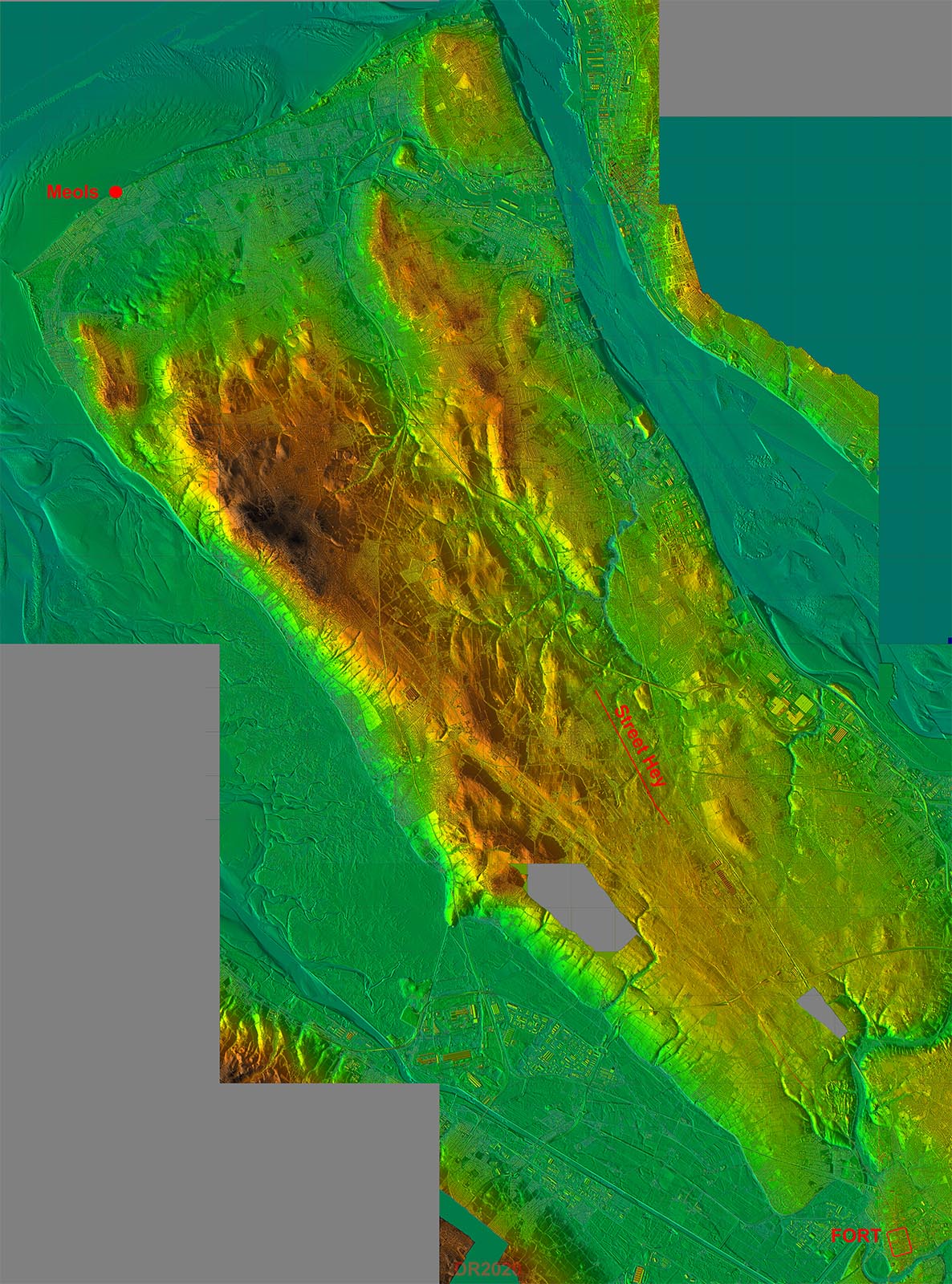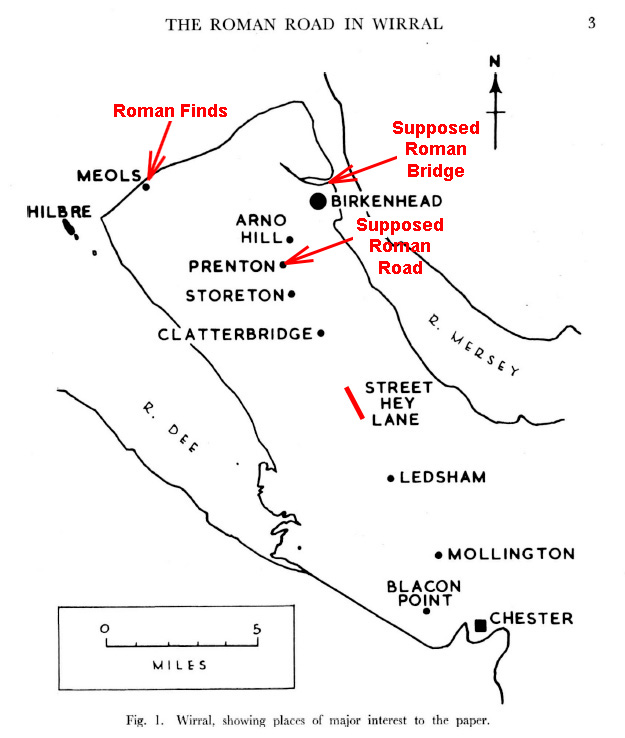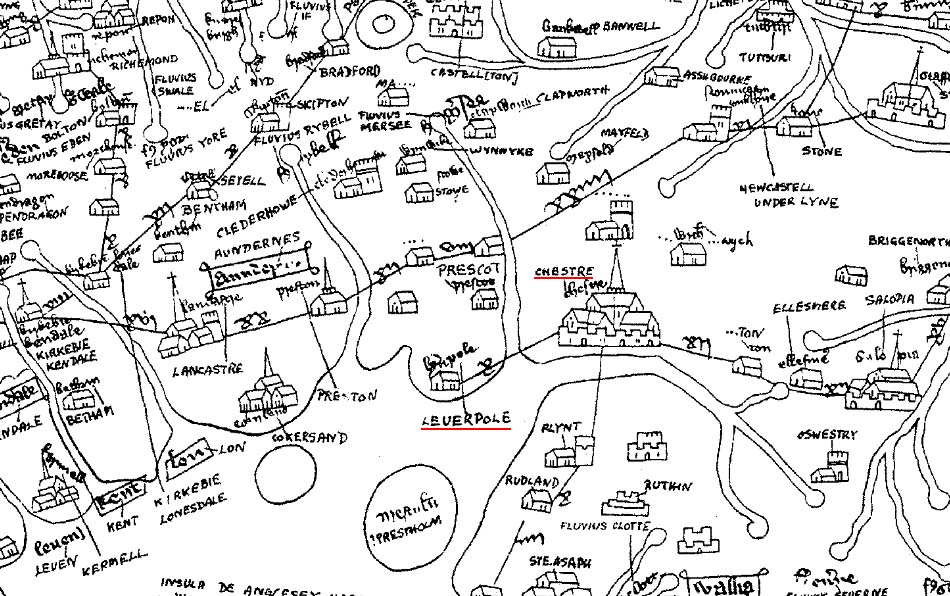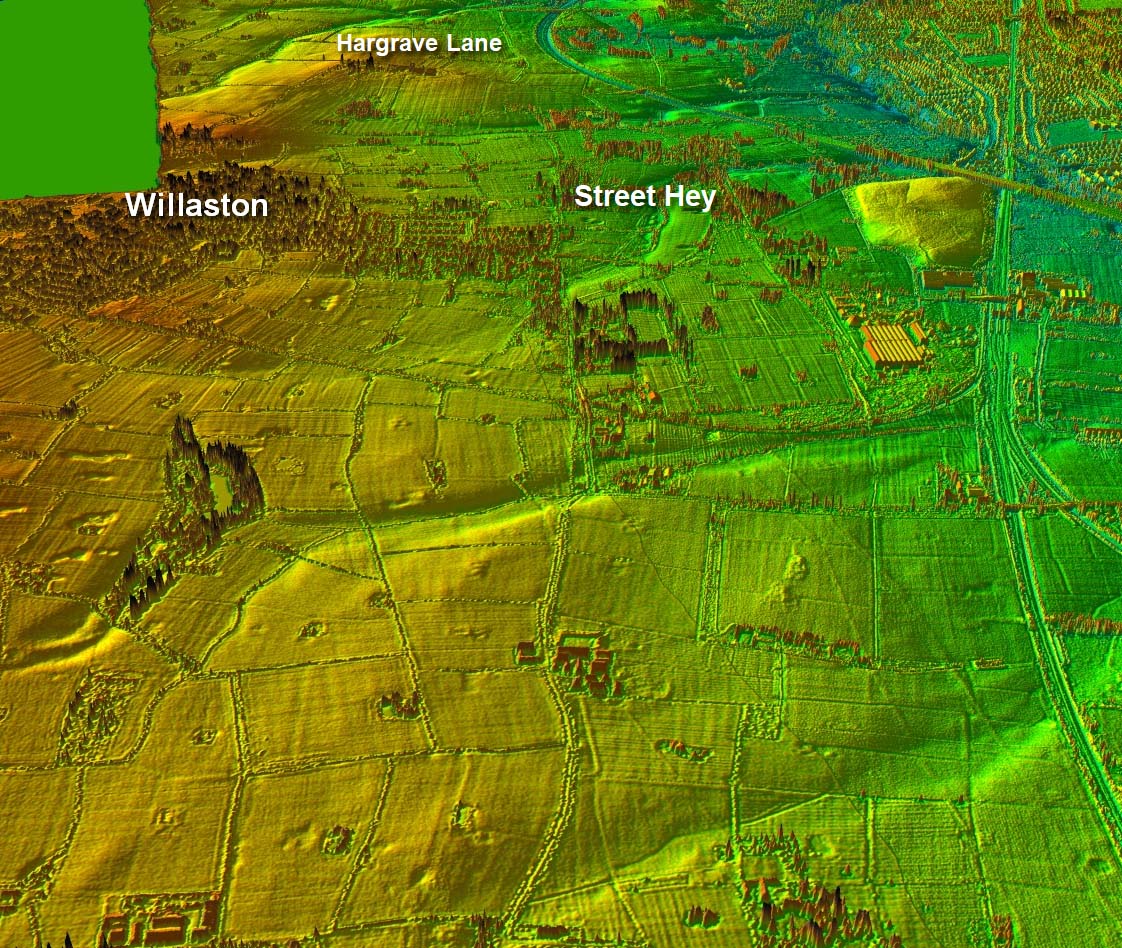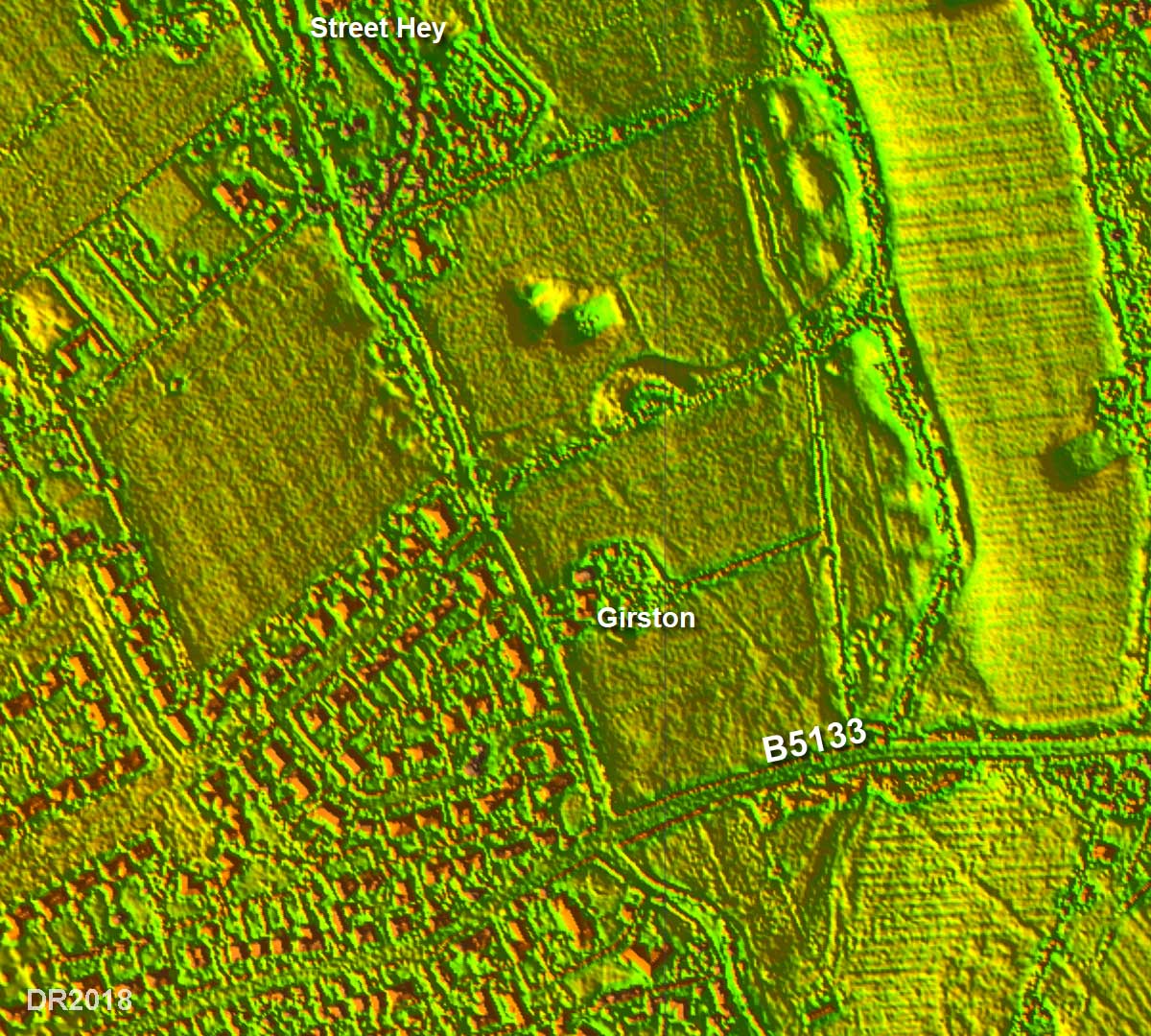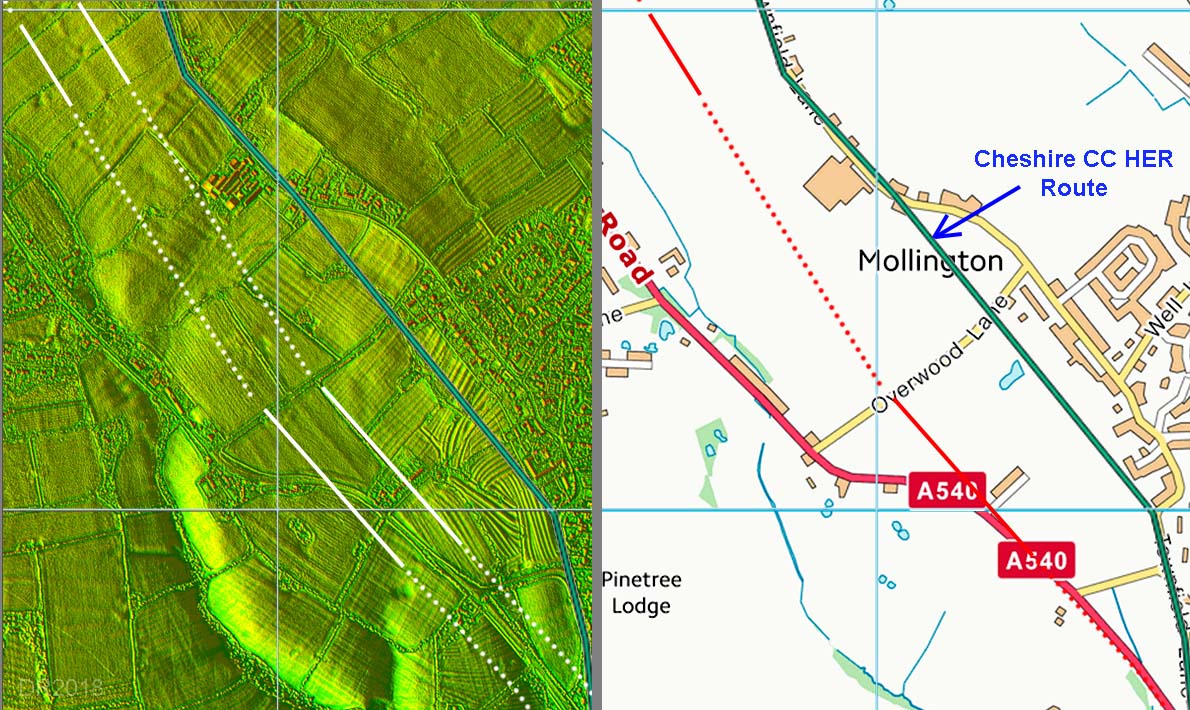
|
The Roman Road from Chester to the WirralMargary Number: 670Distance: 15 miles (assuming Birkenhead as its destination)Included for completeness but is this really a Roman road? It all comes down to less than 3 km of possible road at Street Hey, near Willaston. That name of course is a big clue and Jermy in the 1960s excavated the road there and was convinced he had found and proved a Roman road (see reference below). The problems are all away from Street Hey. No one has found a convincing route back to Chester and even Lidar has not really helped. In the other direction it is a similar story with suggested destinations of Meols and/or Birkenhead also producing no likely road. However, perhaps the strongest evidence that this really being a Roman road is the Gough Map - see later. This map, dated to 1360, shows a highway from Chester to Liverpool. Most of the roads on the Gough map are based on original Roman routes.
|
Historic Counties: Cheshire Current Counties: Cheshire HER: Cheshire
|
|
|
|
|
|
|
|
|
Last update: December 2018 |
© David Ratledge |
